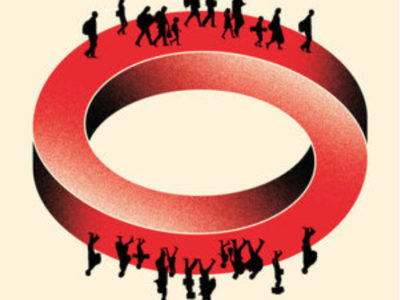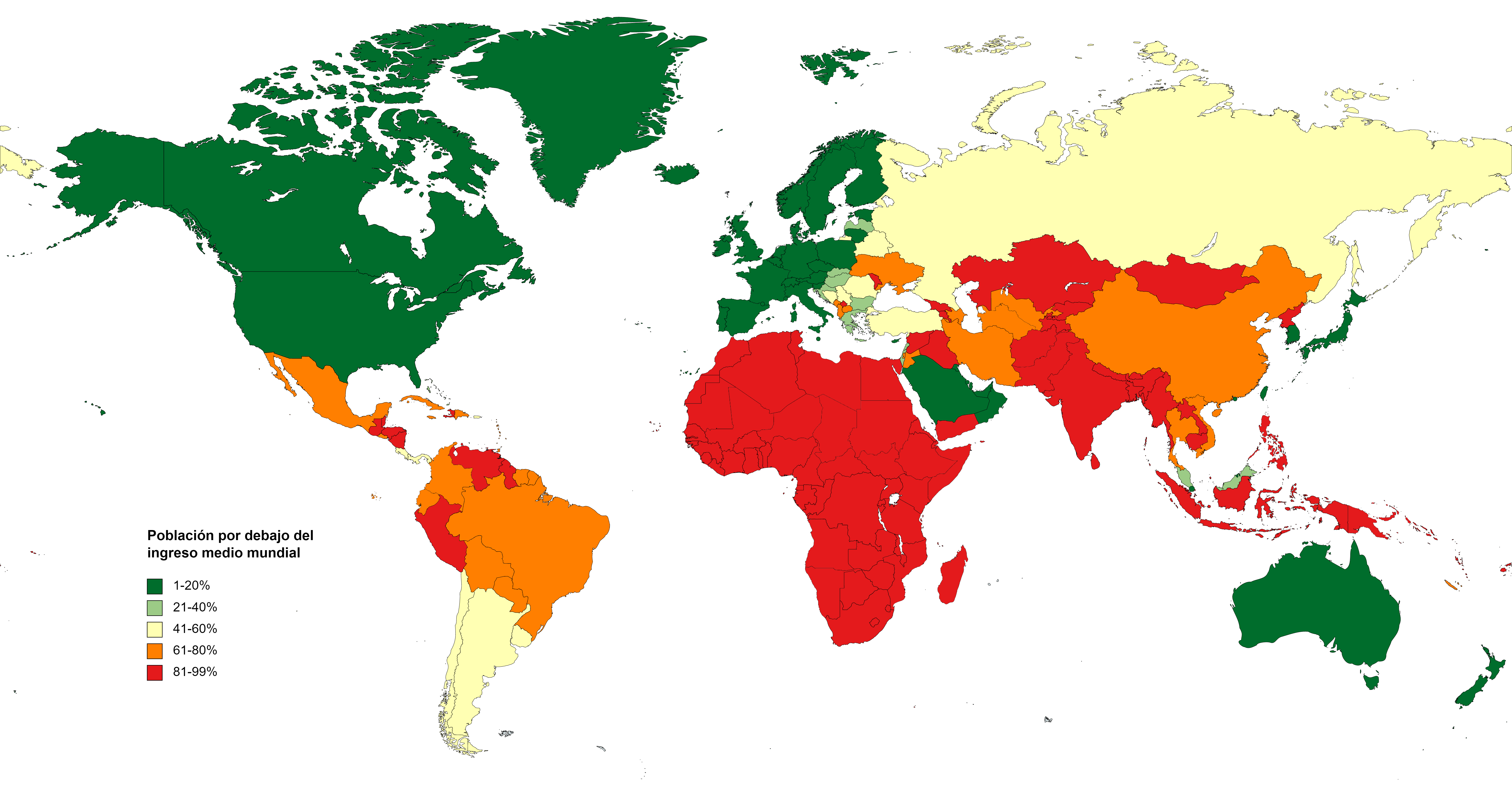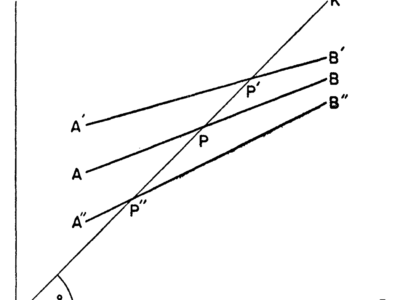Introduction
The analysis that follows rests on the almost traditional premise of historical materialism that the ultimate determinant of history is the development of the productive forces. It is summarized in two famous passages by Marx:
“ . . . Bourgeois historians have well before me expounded the historical evolution of the class struggle . . . What I have introduced as new is to demonstrate that the existence of the classes is only linked with certain historical stages in the development of production . . . ” (Letter to Weydemeyer, 1852 March 5. My italics.)
“No social order is ever destroyed before all the productive forces for which it is sufficient have developed . . . ” (Preface to the Critique of Political Economy, 1859. My italics.)
I am quite well-aware that this conception is no longer in fashion today. One ‘neo-Marxist’ line, very widespread, explicitly repudiates it, and has even labeled it with the dreadful name of ‘economism’! According to its adherents, the class struggle is not only the direct motor force of history, but also its determinant in the final instance. They explain that, since social relations of production and every class rule generate a specific type of development of the productive forces, it is these relations that determine these forces, and not the reverse.
Nonetheless, I hold to the ‘paleo-Marxist’ conception. Not because I can demonstrate its validity. As far as primary principles in the approach to human history are concerned, no demonstration is possible. But, I do not see how one can attempt to predict the evolution of human society if the class struggle is an autonomous variable.
However, every political analysis is ultimately only attempt at prediction and strategic research even when we ponder as to what would have happened in the past had one or another set of conditions prevailed.
This means that I would personally be incapable of approaching the topic of this conference from an ‘anti-economist’ standpoint, which today apparently predominates in Marxist thinking, at least in Western countries.
A class struggle divorced from the economic infrastructure of society is just as indeterminate as the actions of kings and captains, and to refer to the free will of the classes to explain history is no less idealistic than to refer to the free will of great men.1
It might probably be necessary to rectify the excesses of the former determinism. But, if we arrive at the conclusion that there are no laws in human history, then I really do not see what more could be said except to recount the exploits of leaders and parties in chronological order.
Therefore, before drawing any conclusions about the present perspectives for ‘socialism in the world’, I would first like to outline the ‘economistic’ profile of this world.
The North-South division
It is largely accepted today that development and under-development are not autonomous and juxtaposed phenomena which can be examined each within its own terms, but that they are phenomena organically and functionally interrelated.
That is a common place. What is less familiar is the observation that not only is development of the periphery blocked by the very existence of the center, and the growth of the center reinforced by the resources drawn from the periphery, but that this center is today over-developed to the very same extent that the periphery is under-developed.
What can this over or under-development be measured against? It may be measured in relation to the level of development which the existing economic system, in this case the capitalist mode of production, can, under present historical conditions, secure at the level of the whole of mankind.
This means that the United States can be the United States and Sweden can be Sweden only because others, that is, the two billion inhabitants of the Third World, are not.
This also means that every material equalization from the top down is excluded. If, by some miracle, a socialist and fraternal system, regardless of its type or model, were introduced tomorrow morning the world over, and if it wanted to integrate, to homogenize mankind by equalizing living standards, then to do this it would not only have to expropriate the capitalists of the entire world, but also dispossess large sections of the working class of the industrialized countries, of the amount of surplus value these sections appropriate today. It seems this is reason enough for these working classes not to desire this ‘socialist and fraternal’ system and to express their opposition by either openly integrating into the existing system, as in the United States of America or the Federal Republic of Germany, or by advocating national paths to socialism, as in France or Italy.
This is not a question of principles, but a question of interests. A few global figures will be enough to show this. In 1973, the average annual wage in the USA amounted to around US$10,500. The population of the entire capitalist world at that time was about 2.6 billion, and there was a little over a billion economically active. To pay all these economically active people on an American scale would require close to eleven trillion dollars. However, the total national income of these countries in 1973 amounted to only $2.7 trillion.
This means, even if all income earned without the counterparts of labor, profits, rents, interest rates, etc., (which are all components of surplus value) were abolished and mankind resolved to be satisfied from now on with simple reproduction, relinquishing all progress and consuming its entire product, it would not, under these hypothetical conditions, be able to reach more than an average wage of $2,500 per year, that is, a quarter of the American wage.
It is precisely this that severs solidarity between the working classes of the center and the periphery. While all the working classes were subjected to exploitation, no matter how disparate its degree, even when one was 90% exploited and the other 10%, they had an interest in uniting and fighting arm-in-arm, and together expropriating their exploiters, despite the fact that this expropriation improved the situation for some considerably more than for others. But from the moment the workers of certain countries ceased to be the suppliers of surplus value (no matter how little) and became recipients, the situation was reversed and the positions of the working classes became antagonistic to one another.
It might be maintained that this comparison in terms of dollars or surplus value rates is too abstract and illusory. I will suggest another, in physical terms. Today, the citizen of America consumes an extraordinary amount of basic raw materials. Were all the inhabitants of this planet to follow his example and consume the same amount per person, all known deposits of iron ore would be exhausted in forty years, copper deposits in eight years, tin deposits in six years, and petroleum in five and a half years!
However, exhaustion of deposits and reserves is not the only factor that prevents world equalization from above. Ecological limits represent another.
If today’s developed countries can still rid themselves of their wastes by dumping them into the sea or the air, this is so because they are the only ones doing it; similarly, if their citizens can still travel by plane without great difficulty, that is because others have not the means to fly and leave them the privilege of clogging the skies, etc., etc.
These calculations involve no unsubstantial and slippery concepts such as surplus value, capital, etc., or such computable categories as profit, interest rates, etc., but of the consumption of palpable materials. Hence, it is the great mass of the population, the wage-workers themselves who are involved.
It follows from this that apart from all other considerations and all other antagonisms, under today’s objective natural and technological conditions, and in the foreseeable future, the people of today’s rich countries can consume all the things that make up their material well-being and which they seem to value, only because others use them either very little or not at all. They can reprocess their wastes simply because others have nothing much to reprocess. Otherwise, the ecological balance would be fatally imperiled.
This is what makes the antagonism between the center and the periphery irresolvable and transforms the entire working class of certain countries into the worker aristocracy of the earth.
The origins of this ‘disintegration’ and the mechanisms of its reproduction
This division of the world in an over-developed center and an under-developed periphery, which condition and presuppose each other, is not a theoretical (structural) necessity of the capitalist mode of production, but one of its historical avatars.
Marx overlooked this kind of division; he even explicitly formulated his convictions regarding the existence of an opposite tendency towards convergent development of the different parts of the world. For example, in the Preface to the first German edition of Capital he does not hesitate to assert, “The country that is more developed industrially only shows to the less developed the image of its own future,” while in his article in the New York Daily Tribune, of August 8, 1853, he explains in detail how the construction of the railroad in India will inevitably trigger off, whether England wants it or not, the industrialization and development of India.
In fact, Marx was not the only one to entertain such views. All the theoreticians of the Second International believed in the existence of a law tending towards equalization of levels of development. This law was manifested: 1) in the declining rate of profits, which entailed a slowdown in investments and, consequently, in the expanded reproduction of the advanced country, a deceleration enabling the less developed country to catch up with it; 2) in some kind of a mechanism of connected vessels whereby the backward region would drain the surplus resources, in the form of capital and technology, from the developed regions at the top.
On this basis, Lenin certainly had no wish to introduce anything new when he wrote in his Imperialism, the Highest Stage of Capitalism that the exportation of capital has the effect of considerably accelerating the development of the country to which it is directed, and of checking, to a certain degree, the development of the country from which it issues.
No one ever foresaw a world frozen into a pre-determined center and periphery that reproduce and perpetuate each other. Centuries-long historical reality runs counter to this view. Nutrients flowed down from the summit and fertilized the foothills, continually diminishing the gap dividing them. A kind of local saturation returned the overflow of capitalistic accumulation towards the depressions. The crests were continually vanishing from the economic landscape.
As Rosa Luxemburg reminds us [chapter 30, “International Loans,” of Luxemburg’s The Accumulation of Capital —Ed.], the surplus capital of the northern Italian cities financed the development of Holland in the sixteenth and seventeenth centuries. Already during the seventeenth and the beginning of the eighteenth century, Dutch capital contributed to England’s take-off. In the eighteenth and nineteenth centuries England had already completed the first phase of its industrial revolution, while Western Europe had not yet even started out on it. Continental Europe did not, however, become England’s periphery because of this. Rather, it itself became another England.
What was it that so quickly wore out the country at the head of the column and led it to cast off its capital and its technology to those following it? It was the low elasticity of the domestic market that, beyond a certain point, discouraged investment. This limited elasticity was the consequence of the relative consolidation of wages at a level very close to cost of simple biological reproduction of the labor force.
It would seem, in effect, that an inviolable law governs the capitalist system according to which no country can, nor ever could, exceed a certain limit in its development without first increasing its non-productive consumption, that is, its wages.
In contrast to a planned system in which the growth of the sector turning out means of production is the result of stagnation, or even retardation of the sectors producing consumer goods, in a free enterprise system the expansion of the former sectors cannot get far without a more or less parallel expansion of the latter.
Expatriation of the surplus in the form of the exportation of capital provided the system with a way out of the impasse. Thence the simultaneous existence of both a developmental ceiling for any particular country, and centrifugal forces diffusing progress.
In the second half of the nineteenth century, something happened to put this conventional Marxist schema out of line with reality. This something was the radical shift in the balance of forces between the classes in the advanced industrialized countries and within the institutional frameworks of bourgeois parliamentary democracy, a change that extricated wages from the quagmire of physiological subsistence.
This led to a transformation of the conditions of accumulation on an international scale. The domestic market in the countries at the center went into galloping expansion. All obstacles to the capitalization of profit were removed. In a sense, the trade union action of the working class got the system out of trouble even against its will by resolving the contradictions between the two prerequisites for investment: expanding the domestic market—maintaining the profit rate.
Patently, this contradiction could not have been overcome without the existence of a vast periphery capable of diluting the two adverse effects of raising wages at the center, that is, augmenting corresponding prices, on the one hand, and diminishing the world interest rate, on the other. The mechanism of unequal exchange took over this function. From that moment the centrifugal forces of diffusion gave way to the ‘siphoning’ centripetal forces which widen the gap.
This turning point in the dynamics of accumulation is particularly clear in the case of the tumultuous development of the United States. At the beginning of the nineteenth century, the USA was a typical under-developed country, whereas England was already quite developed. Nonetheless, labor costs at that time were higher in the USA than in England. Not merely in monetary terms, when they were already twice as high as wages in England. But also because of something that constitutes, as it were one of the forgotten facts of economic history, namely the lower quality of the American labor force of that time in comparison with Europe in general, and England, in particular. The reason for this was that, with the exception of political refugees, there was a kind of negative selection going on in the countries of origin, for the most capable people in each profession, generally taken, had no reason to emigrate.
Nevertheless, the United States developed well and had soon moved so far ahead that it overtook continental Europe and in the end, England itself. This was precisely possible not in spite of, no matter how paradoxical this may appear, but by virtue of the abnormally high price and low quality of the labor available. The reason for this is that these circumstances generated two of the most powerful incentives for the massive inflow of foreign capital: a very broad market alimented by high wages, on the one hand, and a demand for labor-saving equipment, to save on the doubly expensive labor, on the other.
This all seems extremely absurd. To accept that surplus non-productive consumption and low quality labor are factors of development is like accepting that that the discharge capacity of the mouth of a river is what determines the yield of its sources and its tributaries.
But it is not the observation that is absurd, but the reality it reflects. For a long time now it has been noted that the economic system we live in is a world turned upside-down. Accordingly, unless this is just some simple figure of speech, it can only mean just that: the outflow of a river determines its sources.
In this respect the capitalist system is the opposite of every other more of production, known or conceivable. In all other systems production is in function of available resources; further, consumption is in function of the volume of production and the chosen mode of distribution. In the capitalist system, no one can start to produce unless he or she can first count on a market, that is unless there is already sufficient consumption. In all other systems, consumption is a rising function of production, whereas accumulation, that is, investment, is a diminishing function of non-productive consumption. In a capitalist system, investment, that is, productive consumption, is a rising function of non-productive consumption.
These two inversions of function are inclined to block the system. The first, because there can be no consumption without purchasing power generated by previous production, and no one in that system dares produce anything without the existence of actual or anticipated consumption. The second, because investment and consumption, or, which is the same, productive and non-productive consumption, are two components of the given whole, the global potential of production. As such, they are by nature inversely proportional to one an other, whereas those who have the power to make decisions are not capable of treating them other than as directly proportional.
This blockage is very plain today in certain of the oil-producing countries. It may be seen that even when the Gordian knot, prior production–prior consumption, has seemingly been cut by extraordinary external earnings that fell out of the blue without previous increases in either the one or the other, development nevertheless remains blocked precisely for want of sufficient prior consumption.
What is the situation like? On the one hand, we have dozens of billions of dollars available, and on the other were empty expanses and a few million bedouins. When we have counted up arms deliveries, the installation of various refineries, and possibly the purchase of several supertankers, which are the only existing outlets, independent of the local market (the governments’ thirst for power, on the one hand, auxiliary operations related to the foreign oil market itself, on the other), we have more or less reached the end of the absorption capacity of these countries. All these operations ultimately cover only a part of the huge sums involved. The remainder can be found in Switzerland or London, factor of disorder in the international monetary system, but also perfectly fictitious wealth for their owner.
For such foreign earnings can be materialized only by the inflow of real values, whether consumer goods or equipment. However, no businessman would invest in new products or bring factories to produce them in the deserts of Arabia on the basis of the bedouins’ current incomes. This drawback in turn means that the bedouins’ earnings cannot be raised despite the country’s enormous financial resources. Thus, the situation is at a deadlock.
There are only two ways to stimulate imports and investment: either through an imperative central plan in the upper reaches, or the market in the lower reaches—by socialist or by capitalist dynamics. Since the majority of these countries have rejected the former, only the second course is open to them, but they are very badly situated for it because of their restricted nature of their markets.
Something unusual then happens. After having been too poor to sell their oil at a normal price for a long time, once they were finally able to redress the price by non-economic means, it turned out that they are too poor to be able to pocket the returns.
A country with central planning would not have these problems. If tens of billions of dollars were to fall out of the blue one day, it would be able to convert them into real value without any difficulty. It would even take advantage of the frugality of its bedouins to accelerate its accumulation, allocating the greatest possible part of its supplementary receipts to the purchase of equipment, to the import of machines to build furnaces to make steel, to produce sheet iron to manufacture refrigerators or washing machines in ten or twenty years. In the meanwhile, these transitional operations would transform the bedouins into industrial workers with wages high enough to consume these refrigerators and washing machines.
Socialism’s concrete perspectives
After this analysis, we are perhaps better equipped to face the question raised in regard to the present prospects of social transformation in the two parts of the capitalist world: in the Center on the one hand, and in the Periphery, on the other.
1. Socialist revolution at the “Centre”
On March 2, 1923, Lenin posed the question of the fate of the revolution in the ‘Center’, and reached a surprising answer:
“ . . . will we manage to hold out . . . until the day the capitalist countries of Western Europe complete their development towards socialism? But they are not completing it as we once thought. They are not finishing it by a regular ‘maturation’ of socialism at home but at the price of exploitation of certain countries by others . . . ”
And without a single word of hope regarding the possibility of a future radicalization of the Western ‘proletariat’, he concludes by saying that the only way out lies in the victory of “the revolutionary and nationalist East over the imperialistic and counterrevolutionary West.”
Half-century later, we see no reason at all to add to this statement. On the contrary, we could say that if, in 1923, it needed all the premonitory genius of a Lenin to detect this tendency behind the contrary appearance of a relative intensification of the contradictions in postwar Europe, that is, at the time the “bourgeoisization” of the working class was just getting under way, today one would have to be totally blind not to see this “counterrevolution” which the salaried masses of the West are openly joining, or have a good dose of mystification not to see through such flimsy alibis as “Euro-communism,” “advanced social democracy,” or “socialism without models.”
Evidently enough, the class struggle nonetheless continues, but it can take place only along the line of the real confrontation of classes, that is, on a world scale.
On this scale, there is nothing surprising or unusual in the fact that besides a billion proletarians and some dozen million capitalists there is a workers aristocracy of some 150 million men and women. On the other hand, no principle or knowledge implies that these three classes should be distributed symmetrically throughout the geographical area of the capitalist world. Just as we do not have exactly the right proportions of proletarians and worker-aristocrats in the industrial suburbs and residential districts of the big cities in the industrialized countries or in the provincial cities and the capitals, of this or that province, there is no reason why we should have the same proportions from one country to another, as delineated by state boundaries. There is nothing to be said to the fact that the majority of the workers in certain countries, notably those in the South, are true proletarians, while the workers’ aristocracy is only negligible, whereas in others, notably those in the North, it is the reverse. Just as we cannot count on the contradictions between the salaried of Mayfair in London, or the 16th arrondissement in Paris, and the capitalists of these respective districts to produce a socialist revolution, so neither can we count on the contradictions between the workers of North America or Switzerland, and their own capitalists. The Communist Party of France is right: there can be no dictatorship of the proletariat if there is no proletariat.2
This does not mean that there is no economic or even political struggle between these ‘salaried aristocrats’ and capital in the Center. There is, and at times it is very bitter. Otherwise, this struggle has been very effective. Everything the salaried of the Center have won so far in the field of their economic and social advance they owe to this struggle. Moreover, the object of this struggle is also political power, and on this plane the salaried of the Center have also achieved notable success. Actually, if we abandon oversimplifications regarding the monolithic state that is integrally in the service of big capital, we see that in all the states of the Center, outside the area of questions of vital importance of the system in which big capital naturally reserves the last word for itself, there is an entire indeterminate zone in which the classes that are actually dominated, can casually and temporarily prevail on significant, but not decisive, issues. Bourgeois democracy and the parliamentary system are not a sheer farce. It is even conceivable that in one or another country of the Center the salaried aristocracy could one day defeat the existing capitalist class decisively and install a particular system that could possibly be christened ‘national socialism’, or something similar, but which would actually be an ad hoc system that assures its hegemony.
But these partial or ‘final’ victories over capital in the Center are not necessarily revolutionary from the standpoint of the interests of the international proletariat. Generally they materialize the other way around by means of the mechanism of unequal exchange, on the backs of the proletariat. In certain cases, which are becoming more and more common as the division of the world into North and South consolidates, the conflict between big capital and the ‘salaried aristocracy’ at the Venter consists of the fact that the latter adopt an openly negative attitude to the Third World, ahead of, and in opposition to, their respective “imperialist” governments. A case in point is the latest Swiss referendum which rejected the government’s project for financial assistance to the Third World. All public opinion surveys show that a referendum of this kind would yield almost the same results in whatever country of the Center. But there is even worse.
Considering the vicissitudes of the long-lasting negotiations over Vietnam and the connection between the vacillations of the American government, on the one hand, and the demonstrations and election pressures in the USA itself on the other, I am convinced that had there not been pressure by the American working class in favor of a continuation of the war, that war would have been terminated a year or two earlier than it was.
Although the initiative for American aggression in Vietnam came at the outset from big capital, everything indicates that, from 1969/70 on, the latter actively sought disengagement, accepting the risk of the “communization” of the South. Apart from the stronger-than-was-anticipated resistance put up by the Vietnamese people, the principal reasons for this reversal were: a) world public opinion; b) the reaction of liberals in the USA itself and, especially, c) the gradually growing conviction that a communist Vietnam would not automatically fall into one of the two caps, the Chinese or Soviet, but would pursue an independent state policy.
After that time everything became more definite. During the long period of negotiations, the New York stock exchange kept a close watch on Paris. Systematically, regularly, without a single exception, every time it appeared that the peace talks were deadlocked, a drop in stock prices was registered; every time agency files announced progress, prices revived again. The rises and falls were so numerous and went on so long that no set of circumstances can explain them. The causal relationship is indisputable. American high finance wanted the end of the war.3
If we go back a little in time we will find an even more characteristic example of what the working class is capable of doing when its own privileges are threatened. In 1921, the white working class of the South African Rand mounted an armed insurrection against the government in Pretoria, with the leaders of the left unions and communists at their helm. The slogan was: “Workers of the countries of the world unite for a white South Africa.” The aim of the rebellion was to topple the government which wanted to force employment of black workers in the mines under similar conditions to those for whites. South African fascist historians celebrate this ‘proletarian’ revolt as the birth date of the apartheid regime.4
It follows from this that wage-earner status is not enough to make a social struggle, even a massive one, revolutionary. Engels and Lenin did not hesitate to condemn, on behalf of the interests of the international proletariat, such just struggles as the respective liberation struggles of the people of Alsace and the people of the Balkans because, in their view, these struggles were against the general interests of the international proletariat since they encouraged a rapprochement between France and Tsarist Russia. With even greater reason, we can today point to the adverse character of the struggles of the worker aristocracies of the Center to strengthen or enlarge their privileges.
*
The only remaining hope for the future radicalization of social struggles in the Center, is the re-proletarianization of the wage-earning masses. Though improbable under present historical conditions, it is not impossible in the future. But, it still depends on the periphery’s action.
Even though the oil crisis had limited effects, it provides us with a preview of what such a process of re-proletarianization could be. Here is how the course of events actually proceeded: the workers of the Center, refusing to foot the bill for oil and fighting for the same pay raises in 1974 and 1975, as they had had in the preceding years, stepped up the rise in prices which were already mounting. Alarmed, the governments of the oil-consuming countries, acting separately, tried to reduce their respective share, each at the expense of the others, of the global deficit in the balance of payments with the oil-producing countries, undertaking deflationary measures. These measures plunged the entire system into crisis and unemployment.
The result was that secondary, highly important effects were added to the primary setback brought about by the rise in oil prices. In rounded numbers and on the most conservative estimates (notably those not counting partial unemployment), in all the developed countries together (all the OECD members except Portugal and Turkey) there were 8 million more unemployed in 1975 than the annual average for 1960–73. Since average, added value per active person in these countries amounted to $14,400 in 1975, the loss of domestic production amounts to around $115 billion. This constitutes a supplementary impoverishment which is more important, as may be seen, than the direct impoverishment it is added to and which derives from the difference in the oil bill, which nominally amounted to $70 billion, but was actually (when recycled petrodollars are subtracted) about half of this.
Nevertheless, what was involved was a blow the system could and is in process of overcoming. But this highlights the multiplicatory mechanisms that exist within it and make it extremely vulnerable to risks of this kind.
Suppose that one day the country-producers of four or five other basic raw materials, the most important ones after oil, manage to reach as complete agreement as the Arab countries did, and simultaneously raise prices, multiplying them three or four times over. Let us suppose, further, that these countries are endowed with suitable central planning that frees them of the need to put part of these dollars back into the developed countries, as was the case with certain of the oil-producing countries; that this disruption of the balance provokes a chain reaction of multiplicatory effects that pitch the system not into a mini-crisis like the one we have just passed through, but a major crisis of the 1929 type, whose proportions would not bring only 8 million additional unemployed to the 300 million active in the OECD countries, but some 70 or 80 million. The possibility would then be created for a massive and brutal re-proletarianization of the worker aristocracy of these countries with the revolutionary perspective that implies.
2. Prospects of socialist revolution at the Periphery
Formulated in other terms, the above conclusion means that socialist revolution is possible in the Center only if events come about (originating from the periphery) making the Center cease to be the Center. In other words, hic et nunc the conclusion is unconditionally negative, and we must turn towards the periphery.
On the basis of the fundamental postulate of historical materialism set out in the introduction and according to which it is not the degree of exploitation that renders a situation revolutionary, but the objective incapacity of the system to develop the productive forces, and bearing in mind the scope of present development in relation to the general level of mankind’s technical knowledge today, to ask whether the Third World is ripe for a socialist revolution is actually to ask whether or not, under present-day conditions, it can develop along the capitalist road.
However, the meaning of this question must be properly understood. For, if it is a question of following the path that the present developed countries traversed from the establishment of capitalist production relations, and at the same pace, the answer to our question is incontestably affirmative. The Third World not only can develop, but is already effectively developing, and moreover from all standpoints, and not only at the same pace, but much faster than the model of capitalist development, i.e., of England in the nineteenth century. It tends to be forgotten, however, that this pace amounted to only 13/8% per year on average, and at this rate the national product doubles every fifty years, which means that the average under-developed country of today could catch up with the present medium-developed countries by the year 2176.
Our question is meaningful, therefore, only when it refers to accelerated development, a development of catching-up. Under capitalist production relations, such development is conceivable only if external financing is added to domestic accumulation. Here, the first contradiction arises: since investment means an expansion of the market, to attract foreign capital it would be necessary to increase its non-productive consumption, that is, not oppose a given increase in pays, thus, permitting a decrease in domestic accumulation. It follows that this path is inconceivable unless there is an inflow of foreign capital sufficiently copious to compensate for both the initial paucity of surplus due to under-development, and the additional reduction occasioned by the very need to attract this capital. Capital like this simply does not exist.
Leaving aside Latin America, which is not the least developed region (far from it), and the capital tied up in oil which is a special case in all respects, total direct American investment ‘stocks’ plowed into the least developed countries, that is into an area inhabited by more than a billion and a half people, rose in 1974 to $4.2 billion. Related to the economically active population of this region of around 600 million, this gives us around $7 per worker, which is the equivalent of one good screwdriver. If we take the sum total of accumulated investments by all OECD countries in the least developed countries, we arrive (on the most generous of estimates) at around $25 per active worker, and if we include Latin American ad oil, we arrive at a general average of some $54 of fixed capital per worker for total accumulated world investments in the whole of the Third World.
We can get a good global idea of the distance between goals and reality by remembering that in the OECD countries the average inter-branch fixed capital per worker is of the order of $40,000, and that thirty people are enough to run a supertanker that represents a capital of the order of a hundred million dollars.
If we examine inflows instead of ‘stocks’, there is no longer any question, because over the past few years they have been negative, since withdrawal of funds (repatriation of profits, compensation for nationalization, de-investment of various kinds, etc.) has exceeded new inputs. Yet even if we do not restrict ourselves to private investment alone, but take into account the whole of public assistance, in all its forms, by all the developed countries to the whole of the Third World, we shall, in the ultimate balance, arrive at a positive flow in the Center-Periphery direction of approximately $2.5 billion annually, or $2.50 per worker.5 But that same year, in 1974, gross formation of fixed capital per worker was $2,840 in the United States, $2,900 in Japan, $3,170 in France, and $3,370 in Germany.
If one bears in mind that economic development, or the development of the productive forces is, in the final analysis, nothing other than the growth of labor productivity, and that the index of this productivity is part of the organic composition of capital, that is, the amount of past, accumulated labor employed per unit of living labor, it becomes immediately apparent that counting on foreign investment for the development of the Third World today is not only utopian, but outright paranoiac.
At the same time, one can gauge the inanity of certain current theories that attempt to explain the “blocking” of the Third World’s development by the massive “aggression” of foreign capital. The Third World was not blocked because it was flooded with capital, but because it was deprived of it. Since the break at the end of the nineteenth century mentioned earlier, and especially in view of the so-called consumer society following the last war, the industrialized countries have had no trouble finding means to stimulate their investments at home. They are, namely, too rich not to be able to absorb all the surplus available at home and even part of that generated abroad. They always need the Periphery, not as an outlet as before, but as a complementary resource, not to pour its excess capital into, but to drain it off.
On their part, the under-developed countries are too poor to offer attractive investment opportunities for foreign capital, except for a small import-substitution sector. They are even so poor that they have to send part of their own national surplus to Switzerland because they have no investment opportunities at home.
As we have noted, capitalism can neither invest nor produce without an antecedent market, real or anticipated. In the under-developed countries the capitalist path to development consists in the main of substituting an anticipated market for a non-existing real market. As such, this market has to be credible. Under the present historical conditions, it is not.
It may be observed that except for special cases, no capital today goes from the Center to the Periphery in the framework of the free play of market forces; it has to be attracted by means of privileges. That is why there are all these investment codes, each more generous than the next, by means of which the under-developed countries vie with each other for the little capital they seek to have invested, offering dispensations of all kinds which, sometimes, put a mortgage on the future.
This does not imply that this kind of ‘extroverted’ accelerated development is not possible for one or another small country if, for some particular reason, a disproportional amount of the available capital is concentrated there. This would be because and to the extent that others do not follow it along this path. But every attempt by the whole of the Third World to advance on a broad front along the path of development by integrating into the international capital market, assuming that it is desirable, would be absolutely in vain.
The only path that remains for the Third World as a whole therefore is the socialist path, where the horse is put before the cart again, and where the world stands on its feet, where investment is, as it should be, inversely proportional to non-productive consumption, where accumulation is the faster, the more modest is the standard of living inherited from the past and the immediate demands of the people, where things start from the other end: first, the construction of basic heavy industry, then the machine-tools industry, and then the manufacture of particular machinery, and so on, up the ladder, right to final consumer goods, with each stage of production generating its own market, instead of its requiring the stimulus of a pre-existing market.
We can then hope, even from a strict economic standpoint, that the complete mobilization of all domestic resources and the rationalization of the production effort will effectively replace those few, increasingly doubtful, morsels of external financing.
The desolation this neo-idealism brings can be observed in the discussion on the events in Chile, when Marxists pulled off the extraordinary feat of being able to discuss them in ad hoc talks lasting from morning till night for several days, without mentioning a word about the economic parameters of that country in the three years of Allende’s government. Reading the report of these talks, it would seem that the flight of capital and de-investment, the production slump, inflation, unemployment, etc., did not constitute a problem. It was all a matter of the CIA’s more or less effective intrigues and the more or less clumsy political maneuvers made by the left to win over the middle strata of the population. ↩
Naturally, we will not pretend that England is as integrated in the world economy as Mayfair is in the English economy. But international economic integration is progressing from one day to the next and state borders correspond less and less to economic entities. That is why it is distressing to see the same thinkers who raise so much noise over the “internationalization of capital” become so upset by one of its consequences, i.e., by the ‘Western world’ becoming the Mayfair of the capitalist world. Such a transformation could restrict the field of operation of certain revolutionary talents who have the misfortune to live in ‘Mayfair’ and could make it unbearable for them; it does not fundamentally change the global facts of the problems of mankind. ↩
Just like the ‘radicals’. By contrast, the organized working class fought fiercely against this disengagement. It did not succeed in avoiding it, but it did manage to slow it down. ↩
Nearer our times, the behavior of the Protestant workers of Northern Ireland is just as typical. According to a report by H. Pierre published in Le Monde on September 30, 1971: “ . . . the most virulent appeals (against the Catholics) issue from the Protestant workers. Eight thousand workers from the Harland ship-yards held a mass march to demand internment, while a few weeks prior to that a big meeting of over 25,000 workers demanded more energetic eradication of terrorism.” “Enough with rubber projectiles,” declared comrade Hal. “From now on they need lead. The troops must open fire. After a few clashes of that kind the problem will be settled once and for all.” And he added: “There can be no political solution. The English are deserting us, we will fight against them . . . ” ↩
Naturally we exclude petrodollars. Including them we would get a far more significant final balance, but in the opposite direction: Periphery-Center.
↩










